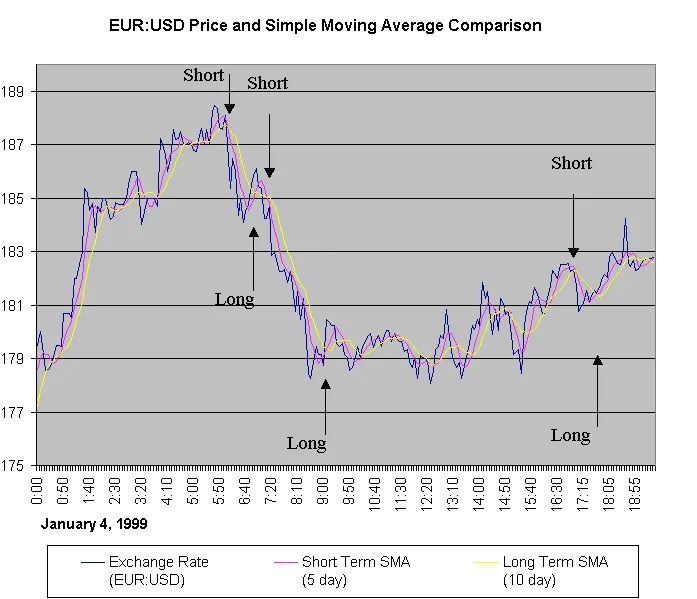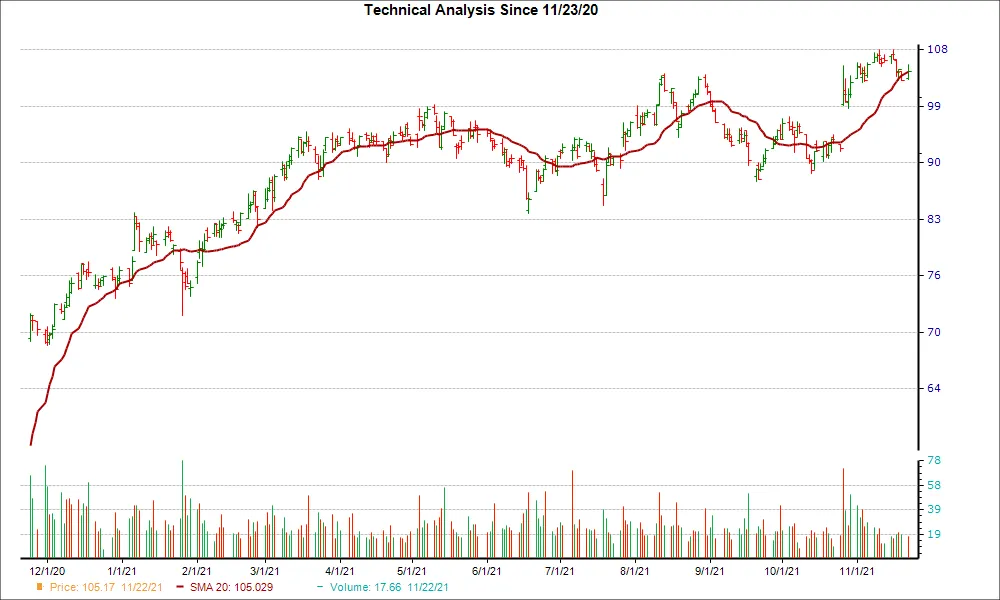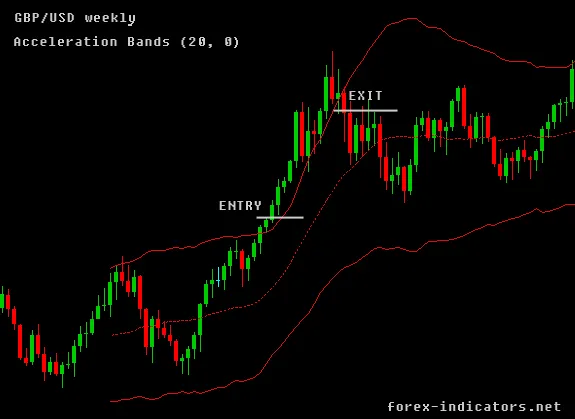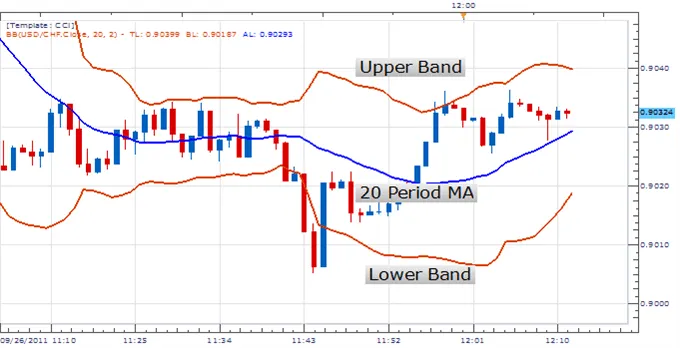Chaikin Money Flow Study
By Samantha Baltodano
TL;DR:
The Chaikin Money Flow (CMF) indicator monitors the accumulation and distribution of a stock over a specified period. Buying pressure occurs when the CMF value crosses above 0. Selling pressure occurs when the CMF crosses below 0.
What Is the Chaikin Money Flow Study?
The Chaikin Money Flow (CMF) was developed as a way to measure the accumulation (buying pressure) vs. distribution (selling pressure) of a stock over time. It does so by measuring the cumulative total of the Accumulation/Distribution Values divided by the total volume for the same period. The standard CMF period is 21 days.
The indicator readings range between +1 and -1. Any crosses above or below 0 can be used to identify changes in money flow, as well as buying or selling momentum.
The principle behind the CMF is the nearer the closing price is to the high, the more accumulation has taken place. Conversely, the nearer the closing price is to the low, the more distribution has taken place.
Calculating CMF
The value of CMF is calculated in the following three steps:
1. Money flow multiplier
The first step is to determine each period’s money flow multiplier as follows:
Money Flow Multiplier = ((Close value – Low value) – (High value – Close value)) / (High value – Low value)
2. Money flow volume
The next step is to calculate the volume of money flow by multiplying the volume for the period by the money flow multiplier obtained in step one. It is usually calculated on a daily basis but can be figured otherwise, such as hourly or weekly.
Money Flow Volume = Money Flow Multiplier x Volume for the Period
3. CMF
The last step is to calculate the CMF value. Simply divide the daily money flow over a certain period of time by the sum of volume for the same period. The default number of periods for CMF is 21 days, as this represents the trading over the past month. (There are typically 21 or 22 trading days in each month.) The formula is as follows:
CMF = 21-day Average of the Daily Money Flow / 21-day Average of the Volume
Since the CMF indicator is an oscillator, it is often represented on a chart as a histogram, similar to the MACD.
Interpreting CMF
Buying pressure leads to positive readings, above zero.
Sustained selling of a stock pushes the indicator below zero.
When CMF oscillates right around the zero line, this indicates relatively equal buying and selling pressure, and no clear trend.
Traders use the CMF system as a tool for identifying and assessing the trends of stocks being traded.
Trading with the CMF (What to Look Out for)
Here are some of the signals that traders can observe when trading with the CMF:
1. Trends
Traders can draw trend lines on the indicator and spot possible breakouts on the chart. A trader must accurately identify a trend since it gives them confidence during trading that the trend will most likely continue.
For example, when there is a continuous buying period (when the CMF value is sustained above zero), the trend is considered bullish and indicates that price will continue to rise with the trend. When there is continuous selling pressure (CMF value below zero), this points to a bearish trend, indicating price will continue downward.
Higher readings, either positive or negative, indicate a stronger trend. Increasing readings indicate gaining momentum.
2. Crosses
Crosses can be observed on the chart when the CMF intersects the zero line either from above or below. The crosses may be an indication of a possible trend reversal.
Crosses may be bullish or bearish. Bullish crosses occur when the CMF crosses the zero line from below, and stock prices continue on an upward trend. Bearish crosses occur when the CMF crosses the zero line from above, and prices continue to fall.
Sometimes, false signals may occur when the crosses are only temporary – just barely crossing the zero line and then crossing back. To minimize false trading signals, some traders wait until the indicator moves more than 5 points past the zero line before entering a trade. (That is, until there is reading higher than +.05 or lower than -0.5.) Traders can also combine the CMF indicator with other technical indicators to obtain confirming trade signals.
3. Divergence
Divergence occurs when price action lacks a corresponding change in the CMF indicator. Bearish divergence is when price moves to a new high but the CMF reading does not go higher. This is interpreted as indicating a possible impending trend reversal to the downside. Bullish divergence indicates a possible upside reversal is coming. This occurs when price falls to a new low but the CMF does not follow suit with a lower reading.
When there is strong trend momentum, a new high price will be reflected in a corresponding new high reading on the CMF.
Limitations of CMF
The CMF indicator is predominantly used as a tool to help gauge the strength of a trend. It is not a trading system designed to provide stop-loss points or pinpoint entry and exit prices. Therefore, traders typically use it in combination with other technical indicators that can provide further information.
Chaikin Money Flow vs Money Flow Index
The similarities between the CMF oscillator and the Money Flow Index (MFI) end with the idea that they are both commonly used by active traders to monitor the flow of money and/or momentum. Yes, while both are commonly used momentum indicators on stock charts, the math underlying each indicator—and how traders interpret signals—is quite different.
The MFI is quite different from the Chaiken money flow oscillator because it uses volume in combination with recent price movements to determine whether momentum is up or down. Many traders view this indicator as a volume-weight relative strength index (RSI), which is calculated using average price gains and losses over a period of time (usually 14 days).
Since the Chaikin oscillator and money flow index are calculated using different elements, it is unsurprising to see that the trading signals are quite different. In general, understanding the underlying formula of any technical indicator is essential before using it to generate buy and sell signals.
Chaikin Money Flow vs Chaikin Oscillator
The CMF and Chaikin Oscillator are often confused, but in fact when looking at the CMF vs Chaikin oscillator indicators, we can establish a clear difference:
- The CMF indicator measures the amount of money flow volume (the amount the security is being traded) over a specific period, as well as in which direction it is moving (negative or positive).
- The Chaikin Oscillator measures the momentum behind the accumulation distribution of the security. Additionally, as the momentum often represents trends (with increased buying indicating bullish behavior and increased selling indicating bearish behavior), it is a great indicator of changing trends. Due to its use of EMAs, the Chaikin Oscillator is also considered faster at picking up reversals than the CMF.
Summary
- The CMF indicator measures the amount of money flow volume (the amount the asset is being traded) over a specific period, as well as in which direction it is moving (negative or positive).
- Buying pressure occurs when the CMF value crosses above 0. Selling pressure occurs when the CMF crosses below 0.
- The CMF oscillator and the Money Flow Index are both momentum indicators, but the similarities end there because the ways the indicators are calculated and interpreted are different.
- The CMF measures the amount of volume flow while the Chaikin Oscillator measures the momentum behind the accumulation and distribution of a security.
Chaikin Money Flow is just one of many studies that Archaide automates. For a full list of strategies and studies available click here.
Like what you read? Check out the rest of our content!




